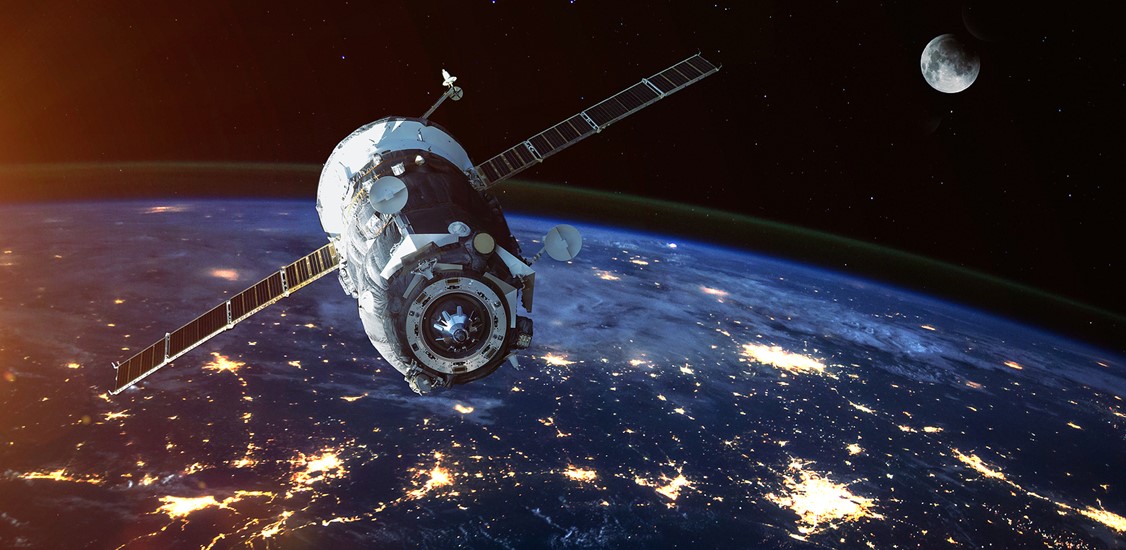The global satellite industry is undergoing exceptional growth on all fronts, including new LEO constellations, user terminal technologies, IoT solutions and high-capacity links. These changes will alter the course of the global satellite industry - including the African communications landscape.
We look at key developments during 2021 that have the potential to set the African and South African satellite industry on a new course for sustained growth.
Compared with mainstream fibre and mobile telecommunications, the satellite industry is a niche, specialised market which until recently was only used for government, broadcast and other limited telco requirements.
That is all about to change. New satellite constellations, user equipment innovations and ground segment service changes are driving growth and diversity. While satellite will always remain a specialist environment, it can now offer the necessary price and performance points to be an attractive alternative when needed.
OneWeb - fully funded and preparing for service
OneWeb is developing both LEO (Low Earth Orbit) and MEO (Medium Earth Orbit) constellations and now has more than 360 satellites in service - over 50% of the planned complement. It is also now fully funded, having secured $2.7bn funding collectively from Japan’s Softbank, the UK government, Bharti Global, Eutelsat and Hanwa Phasor, thereby setting up strong inter-industry cooperation.
OneWeb is already building gateway terminals in Africa and plans to bring the benefits of new LEO/MEO technology to the continent, in collaboration with leading Service Providers. The OneWeb business model offers sustainable upliftment advantages for all. Its high performance, low-cost, low-latency services will transform connectivity for end-users and businesses, while service providers can earn the additional revenue required to build the capabilities needed for sustainable customer support.
Space X, now a 'Centicorn'
In October 2021, CNB reported that SpaceX’s market valuation had reached $100 billion – that is a $1 billion unicorn, 100 times over and 33% more than its $74 billion evaluation in February 2020. SpaceX has built the Starlink constellation, with 1,600 LEO satellites in place, serving about 100,000 users in the US.
In April 2021, Starlink opened prelaunch offers to the South African market with $99 deposits and an expected equipment price of $499 and monthly service charge of $99. Although this created widespread interest and excitement at the time, very little additional information has been made available about the service levels and expected service start dates. In November Starlink also made announcements regarding the Nigerian market.
Starlink will certainly create attractive options for the end-user and consumer markets in Africa and could potentially change the satellite landscape in Africa for ever. Starlink has not announced any collaboration agreements with any African Service Providers, and at this point in time it is unclear how it plans to provide customer support and ensure sustainable and trusted long-term delivery.
Satellite internet-of-things (IoT) growing to 15.7 million devices
'Research and Markets' reported that the global satellite IoT market grew to 3.4 million devices in 2020 and is set to grow at 35.8% annually and to reach 17.7 million devices in 2025. While Orbcomm, Inmarsat, Iridium and Globalstar are the largest players, the report covers a total of 38 IoT satellite operators which reflects the growing interest in, and potential of, this market sector. This growth is being fuelled by reduced market entry costs due to launch cost improvements and satellite miniaturisation with Low Earth Orbit (LEO) designs now weighing just 10kg.
In 2021, SWARM raised $25M to launch its own constellation of miniature satellites (smaller than a CD case at just 11cm2). Then in August 2021, Elon Musk announced that he is buying SWARM, further driving innovation and market readiness. SWARM communication tiles retail at $119 with data plans costing around $60 for about 750 data packets per month, with each packet equivalent to up to 200 bytes.
The business case and cost metrics of new entrants such as SWARM, Hiber and HiSky makes it more feasible to leverage satellite IoT solutions to solve real world problems. In an African context, applications such as logistics, agriculture, distributed industrial plants and smart grid environments stand to gain from these emerging alternatives.
Ground stations as a service
In 2021 the first ground segment projects started for the New Space LEO/MEO services, and it soon became clear that these projects are greedy for ground. Traditional teleports service geostationary satellites (GEOs) with fixed locations relative to the earth require only one antenna per satellite, with minimal footprint requirements. However, the New Space LEO and MEO constellations with satellites moving across the sky require complicated gateway ground stations to connect the satellites with the terrestrial networks and therefore need multiple tracking antennas and also multiple gateways around the globe to stay in touch.
According to Euroconsult’s report, the commercial satellite ground segment market is going through significant expansion in terms of both capabilities and demand and will grow from $264 million in 2018 to nearly $360 million in 2028. This adds to an aggregated expected market value in the next decade of some $4 billion.
While the space constellation developments are mostly being carried out by international companies - placing the technology developments and the majority of revenue streams in the international environment - Ground Segment services are very much an African agenda. Further supporting the opportunity for Africa is the current drive to develop Ground Stations-as-a-Service models. New Space operators are more inclined to partner with African regional providers and source Ground Station infrastructure using “as-a-Service” business models. For African Service Providers who have the engineering expertise and ground segment infrastructure, this represents new opportunities to benefit from the global growth in LEO/MEO sectors.
Introducing smart satellite service
Recently launched high throughput satellite service platforms such as Twoobii-on-Flex has advanced network features and is introducing the model of Smart Satellite Services to the market.
Smart Satellite Services refer to the bouquet of IP features that are required by the business broadband market and which ensures seamless integration with customer core networks. These features include Layer-2 over satellite services; advanced quality-of-service for assured real-time applications; content aware and content billing options; direct integration with customer core networks; and flexible billing models.
For the African market, Smart Satellite Services are enabling new options to ensure business access, business continuity and always-on services. These services effectively eliminate past constraints and are moving satellite services beyond the myths that satellite is slow, expensive and has a latency problem. Using Smart Satellite for real-time video conferencing; Zoom and Teams meetings; direct integration with Point-of-Sales services; video surveillance etc.. are all solutions that are opening new applications in the Africa marketplace.
Changing to a vertical-industry-integrated model
At the Satellite 2021 conference held in Washington DC a panel discussion shared views on one of the most critical and fundamental changes happening in the satellite industry - the evolution of the traditional satellite wholesale model. Faced with a decline in wholesale MHz pricing, satellite operators are opting for vertical integration by selling bulk Mbps and in some cases, direct-to-market retail services.
This sentiment was summarised by Amit Somani, Chief Strategy Officer for UAE-based provider Yahsat, who stated that innovation in the business model actually trumps technological innovations. This was the case for Yahsat - according to Somani, the company’s growth stems from “partnering, thinking about going downstream, thinking about hybrid models to do business. Product and business model is where we will do more innovation to capture the market.”
We fully agree that business model innovation is key in unlocking markets for new technologies. This is particularly true in the African context, where finding the most successful business model might be more challenging than expected. Within Africa’s specific regulatory environment, delivery challenges and fast market growth potential, it will be the wise that will succeed rather than those who adopt more bullish ‘do it yourself’ models.
Conclusion
2021 has certainly seen further growth and acceleration in satellite technology innovation and development. In the context of the emerging LEO/MEO market, we have only mentioned the successes of OneWeb and Starlink, but Amazon’s Project Kuiper, SES mPower, Telesat Lightspeed and Viasat’s LEO projects are also major players. All these developments look set to change the African satellite industry specifically, and the wider Africa digitally connected world.
While technological developments are necessary for meeting the needs of users, sustainable value is determined by the structure of the business model and the degree of commercial engagement. Yes, Africa is a very big market and does hold attractive revenue returns, but it also has specific regulatory challenges, ground infrastructure requirements and service delivery challenges. The way forward is aptly summarised in an old African proverb: 'If you want to walk fast, go alone; if you want to walk far, go together'.






















